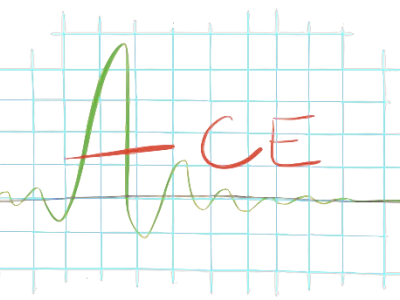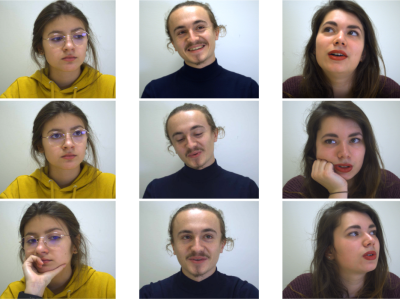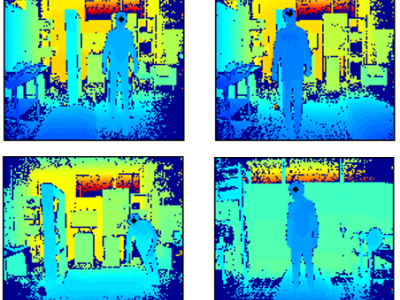The Ace Challenge 2015

- Citation Author(s):
-
Alex Outman
- Last updated:
- DOI:
- 10.5072/FK2NV9G85X
- Data Format:
- Links:
 2521 views
2521 views
- Categories:
- Keywords:
Abstract
Several established parameters and metrics have been used to characterize the acoustics of a room. The most important are the Direct-To-Reverberant Ratio (DRR), the Reverberation Time (T60) and the reflection coefficient. The acoustic characteristics of a room based on such parameters can be used to predict the quality and intelligibility of speech signals in that room. Recently, several important methods in speech enhancement and speech recognition have been developed that show an increase in performance compared to the predecessors but do require knowledge of one or more fundamental acoustical parameters such as the T60. Traditionally, these parameters have been estimated using carefully measured Acoustic Impulse Responses (AIRs). However, in most applications it is not practical or even possible to measure the acoustic impulse response. Consequently, there is increasing research activity in the estimation of such parameters directly from speech and audio signals.
ACE Challenge Overview
The ACE Challenge was part of the programme of Challenges organised by the IEEE Audio and Acoustic Signal Processing Technical Committee.
The aim of this challenge was to evaluate state-of-the-art algorithms for blind acoustic parameter estimation from speech and to promote the emerging area of research in this field. Participants will evaluate their algorithms for T60 and DRR estimation against the ‘ground truth’ values provided with the data-sets. Furthermore, they are expected to present the results in a paper describing the method used.
Data
A data-set specifically designed for the challenge tasks was provided using anechoic speech convolved with AIRs measured from real rooms with additive noise recorded under the same conditions. This included speech from male and female talkers in different sized rooms and different noise conditions for a single microphone and for microphone arrays with two (laptop), three (mobile), five (cruciform), eight (linear), and thirty-two (spherical) microphones
Task 1
Single-microphone fullband T60 and DRR estimation
Task 2
Multi-microphone fullband T60 and DRR estimation
Task 3
Single-microphone T60 and DRR estimation in 1/3-octave ISO subbands
Task 4
Multi-microphone T60 and DRR estimation in 1/3-octave ISO subbands
Evaluation
The evaluation metrics were to be based on the ground truth values determined using established techniques across a range of dimensions in addition to T60 and DRR such as SNR, talker, and utterance length.
Instructions:
ACE Corpus
The ACE corpus of AIRs and matched noises used to create the ACE Challenge Development and Evaluation datasets is freely available under the Creative Commons Attribution-NoDerivatives 4.0 International License.
The corpus and the ACE Challenge are described in the following paper:
- J. Eaton, A. H. Moore, N. D. Gaubitch, and P. A. Naylor, "The ACE challenge – corpus description and performance evaluation," Proc. IEEE Workshop on Applications of Signal Processing to Audio and Acoustics (WASPAA) , New Paltz, NY, USA, Oct. 2015.
Please cite this whenever you use any part of the corpus (BibTeX reference available here).
The corpus comprises the following components:
Documentation and software
Anechoic speech
Comprising Development (Dev): 4 male talkers, 2 utterances each, and Evaluation (Eval): 5 male and 5 female talkers, 5 utterances each, recorded using the anechoic chamber at TU Delft at fs=48 kHz in 16-bit format. Plain text (.txt) transcriptions of each .wav file are included.
RIRs and noise by microphone configuration
Each archive below contains the set of fs=48 kHz 16-bit RIRs, ambient, fan and babble noise .wav files for each room and microphone position for that microphone configuration, recorded in 7 different rooms in the Dept. of Electrical and Electronic Engineering at Imperial College London.
The ACE Corpus speech, RIRs, and noises are available by registering here.
If you have already registered click here to obtain the corpus.
- Corpus instructions including software operating instructions
- Software to generate new datasets from the corpus materials (Matlab)
- T60 and DRR measurements in fullband and ISO-266 preferred frequency bands
- Room dimensions and approximate positions of microphones and sources
- Single-channel (based on cruciform channel 1) 417 MB
- 2-channel laptop 1.05 GB
- 3-channel mobile 1.59 GB
- 5-channel cruciform 2.84 GB
- 8-channel linear 4.24 GB
- 32-channel spherical 14.2 GB
ACE Corpus by Imperial College London and University of Delft is licensed under a Creative Commons Attribution-NoDerivatives 4.0 International License.
Dataset Files
- Ground truth T60 and DRR data (Size: 1.1 MB)
- RIRs and noise - Single (Size: 397.88 MB)
- RIRs and noise - Chromebook (Size: 1002.72 MB)
- RIRs and noise - Mobile (Size: 1.48 GB)
- RIRs and noise - Cruciform (Size: 2.65 GB)
- RIRs and noise - Lin8Ch (Size: 3.95 GB)
- RIRs and noise - EM32 (Size: 13.2 GB)
- Anechoic speech (Size: 141.3 MB)








